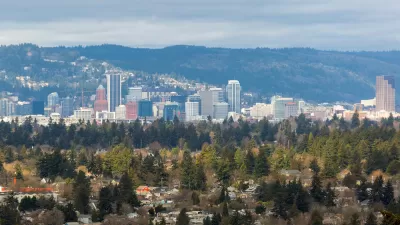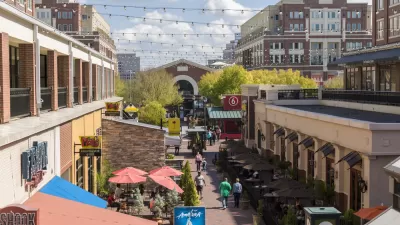A new report by the Urban Institute examines the consequences of small differences in land use regulations.

"Why did accessory apartments catch on in Portland but not DC? A new study from the Urban Institute compares the land-use reform process in each city, as well as the end result."
Libby Solomon shares news of a newly published comparative analysis of the efforts of two cities to allow accessory dwelling units (ADUs): Portland and Washington, D.C.
The premise of the analysis: that Portland has been far more successful in achieving the desired development of ADUs, despite the similar intentions of land use reforms passed in the past decade in each city, both with similar development histories and populations.
"But that’s where the similarities end," writes Solomon to summarize the findings of the report. "[W]hile Portland’s accessory units skyrocketed, with hundreds built each year, DC’s accessory apartments saw a much smaller bump. From 2017 through 2019, Portland issued more than 1,500 ADU building permits; DC issued only 68."
According to the Urban Institute's analysis, property owners in D.C. face structural and historical issue that make ADUs significantly more difficult and expensive to build.
"In the end, DC’s new zoning regulations passed allowing accessory units by right in residential zones. But those regulations are more restrictive than advocates wanted," writes Solomon. "The Urban Institute researchers write that ADU regulations are too complex for many to navigate without hiring lawyers and architects; the space requirements cut out many potential builders; and the rules require the owner to live on the property."
A lot more analysis and insight into the findings of the report are available in the source article.

Alabama: Trump Terminates Settlements for Black Communities Harmed By Raw Sewage
Trump deemed the landmark civil rights agreement “illegal DEI and environmental justice policy.”

Planetizen Federal Action Tracker
A weekly monitor of how Trump’s orders and actions are impacting planners and planning in America.

The 120 Year Old Tiny Home Villages That Sheltered San Francisco’s Earthquake Refugees
More than a century ago, San Francisco mobilized to house thousands of residents displaced by the 1906 earthquake. Could their strategy offer a model for the present?

Ken Jennings Launches Transit Web Series
The Jeopardy champ wants you to ride public transit.

BLM To Rescind Public Lands Rule
The change will downgrade conservation, once again putting federal land at risk for mining and other extractive uses.

Indy Neighborhood Group Builds Temporary Multi-Use Path
Community members, aided in part by funding from the city, repurposed a vehicle lane to create a protected bike and pedestrian path for the summer season.
Urban Design for Planners 1: Software Tools
This six-course series explores essential urban design concepts using open source software and equips planners with the tools they need to participate fully in the urban design process.
Planning for Universal Design
Learn the tools for implementing Universal Design in planning regulations.
Clanton & Associates, Inc.
Jessamine County Fiscal Court
Institute for Housing and Urban Development Studies (IHS)
City of Grandview
Harvard GSD Executive Education
Toledo-Lucas County Plan Commissions
Salt Lake City
NYU Wagner Graduate School of Public Service





























